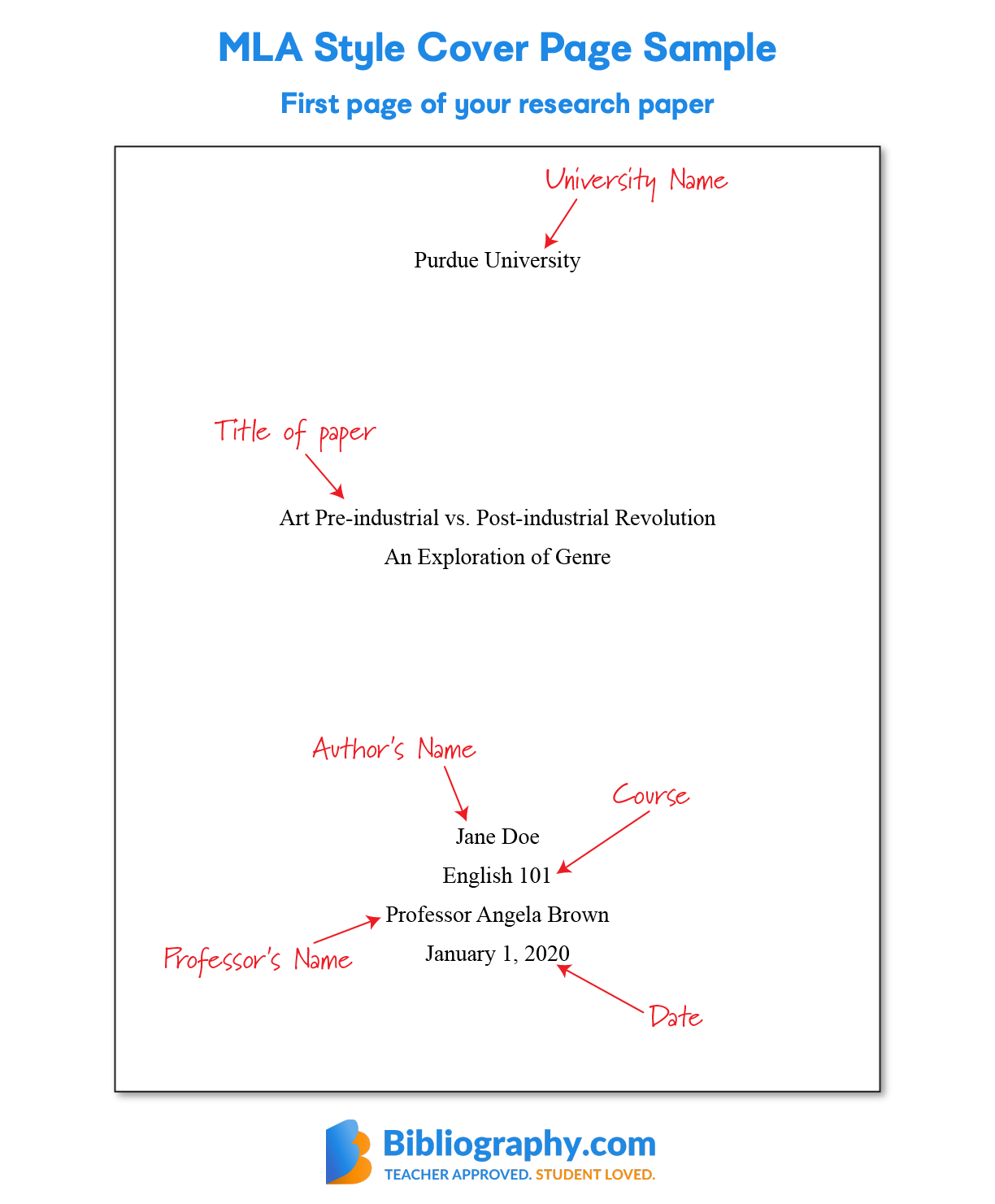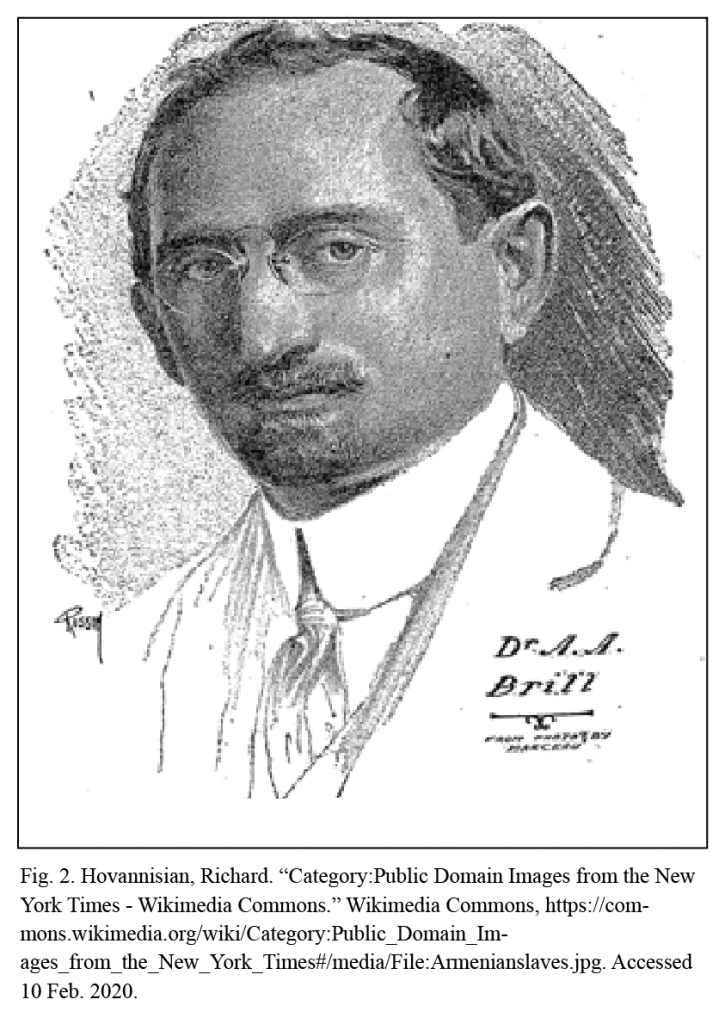If you’re new to writing research papers, setting everything up can be intimidating. However, breaking the MLA paper format down into the basics makes it much easier to digest. Learn how to set up your paper, cover page, headings, headers, tables, and figures in your MLA paper.

MLA Paper Format General Guidelines
In general, the MLA style formatting guidelines are flexible. That’s why so many teachers and students like to use this writing style for their middle school, high school, and college research papers. However, while MLA is flexible, it still has a few formatting rules students need to adhere to. The fundamental break down for formatting an MLA paper includes:
- Use standard 8.5 x 11 white paper
- Numbering your pages
- 1-inch margins (all sides)
- Readable font
- Double-spaced
- Indent new paragraphs
- Only one space between sentences
Now that you know the basics, it’s time to look at the different formatting aspects you need for your cover page, headings, headers, text formatting, and tables.
MLA Cover Page
MLA papers don’t typically have a cover page. But, if a teacher asks for one, it’s essential to know how to do it. An MLA cover page includes a few things like:
- University/school’s name
- Title of the paper
- The subtitle, if you have one
- Your name
- Course name and number, if you need it
- Professor/teacher
- Due date
And that is pretty much it. Everything is centered on your cover page. The school name or university is at the top, and the title in the middle. Your name, course, professor, and due date are toward the bottom.

MLA Headings & Headers
Rather than a cover page, your paper typically has a heading and title on the first page of your work. Your MLA heading and title include your name, instructor, course, and date aligned to the left. The title is centered before you start the body of your paper. Additionally, each page of your paper has a running header with your name and the page number, including the works cited.

MLA Text and Body Formatting
In the body of your paper, MLA offers recommendations for you when it comes to fonts, spacing, formatting, numbers, and abbreviations.
MLA Paper Formatting: Readable Font
When it comes to writing your paper, you need a readable font. Your teacher doesn’t want to bust out the magnifying glass to see your work. And to make sure of that, MLA recommends a font that is easy to read and distinguishes regular and italicized text like Arial or Times New Roman. Additionally, use a standard font size like 11 or 12 point. Making everything a 14-point font doesn’t make your paper look longer.
Spacing and Formatting for an MLA Paper
When it comes to the spacing and formatting of your paper, stick with double spacing throughout the entire body and works cited and make sure your text is left-justified, so the right margin has a ragged edge. It’s also vital to indent every new paragraph five spaces by hitting the tab on your keyboard. To keep everything neat and tidy, follow the standard punctuation rules for commas and periods.
Numbers in MLA Formatting
Using numbers in MLA isn’t hard, but you must follow a few rules. MLA clarifies when to use Arabic and Roman numerals and when to spell out numbers or just use the Arabic form. For example, if you can spell a number out in a few words, go for it. However, if you need a whole sentence, it’s better to stick with Arabic numerals like 1,345,267. Your fingers might start to hurt writing out that one.
Number Examples
Ten, twenty-six, two million
129, 879, 3 ¾
Abbreviations in MLA Formatting
To keep your fingers from cramping, you can use abbreviations in MLA formatting. But like everything else, rules need to be followed for abbreviations. For example, end abbreviations with a period if they end in a lower case letter, and abbreviate months longer than four letters.
Abbreviation Example
Jan., Feb., ACL
Formatting Tables & Illustrations in MLA
Another crucial part of your MLA paper formatting is the tables and illustrations. Not only do they add color to your work, but some things must be shown rather than read. When it comes to tables and figures, keep the figure as close to the text as possible, and follow MLA formatting rules.
Formatting a Table in MLA
Formatting a table isn’t hard in your MLA paper. And, you can include as many as you want. Just keep these formatting rules in mind.
- Label “Table” is flush left, followed by an Arabic numeral. (Table 1)
- The title is flush left under Table in the title case. (Number of COVID Cases in the US)
- Give the source of your table directly below the table. It needs to be flush left and include a hanging indent for information that goes into a second line. Additionally, all the information should be double spaced.
- Use a dividing line to separate the source from the table.

Figures in MLA Papers
Now, it’s time to look at MLA figure formatting. MLA format is excellent for art and language paper topics. Therefore, images, illustrations, and maps could be a big part of your paper. Formatting an image in MLA is similar to a table, but there are a few distinctions in formatting.
- Label “Fig.” followed by an Arabic numeral is placed directly under the image. (Fig. 1)
- Right next to the label will be the caption. (Fig. 1. Map of Scotland)
- The caption can include source information, and then it doesn’t have to be cited in the text.
Musical illustrations follow the same rules as a figure, but you label them as an example (Ex. 1).

MLA Paper Format Made Easy
Preparation has you ready! Armed with MLA paper formatting knowledge, you are fully prepared to set up your paper with ease. Now get writing!
FAQ MLA Paper Format: Simple Guidelines to Follow
How do you write a paper in MLA format?
To write a paper in MLA format, you need a running header with your last name and page number, 1-inch margins on all sides, indents when starting a new paragraph, and a readable font. You'll also cite your sources in-text and on your works cited page using MLA format citations.
What should an MLA paper look like?
An MLA paper has a standard look for every page including 1-inch margins, a readable font, a running header including your last name and page number, and author-page in-text citations. At the end of your paper, you will include a works cited with a list of all the sources used in the paper.
How do you write a MLA research paper?
To write an MLA research paper, you must adhere to the guidelines set for by the Modern Language Association. Therefore, you must include scholarly resources that are cited using the author-date in-text citations. At the end of your paper, include a works cited listing your academic sources. When setting up your paper, use 1-inch margins, a readable font, indents for new paragraphs, and a running header.
How do you properly head a paper?
To properly head a paper in MLA format, include a running header that is right-aligned. Your running header includes the page number and your name.
What is MLA format template?
An MLA format template is created in a word processing software to set up the 1-inch margins, double spacing, and running header for your MLA paper. You can also do this yourself by following MLA page layout guidelines for these areas.
